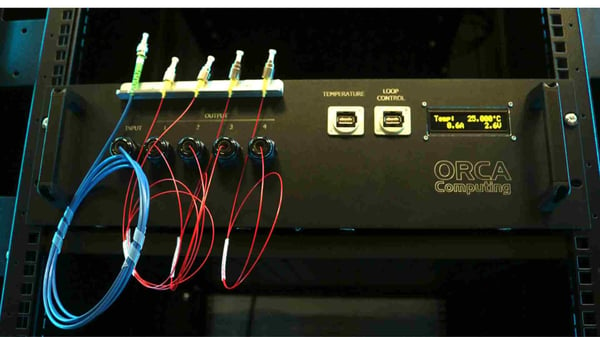How the MoD is using geofencing to secure mobile devices
-1.jpg?width=730&name=Untitled%20design%20(6)-1.jpg)
Securing the devices and data of a remote workforce is a priority for most organisations. For the Ministry of Defence (MoD), it is an issue of national security. To prevent sensitive information falling into the wrong hands, the MoD’s Defence Digital team, together with the Defence and Security Accelerator (DASA), recently tested the use of geofencing technology to protect access to government devices used by staff working remotely.
Geofencing is a location-based technology able to trigger an action, such as disabling a webcam or microphone, when a mobile device enters or leaves a virtual area set up around a geographical location, or geofence. This virtual fence is built using GPS, radio-frequency identification (RFID), wifi or an IP address.
Geofencing was brought to the attention of Defence Digital, the MoD organisation responsible for digital and information technology in the military, through routine market engagement, a spokesperson for the unit told Government Transformation.  As the team responsible for innovation, Defence Digital consistently monitors digital technology trends to understand potential uses and implications in the defence arena.
As the team responsible for innovation, Defence Digital consistently monitors digital technology trends to understand potential uses and implications in the defence arena.
Defence Digital also works with colleagues in the MoD to understand user needs and to inform technology projects and programmes. In the case of securing device access within the remote workforce, the project focused on validating technology functionality against a number of specific use cases and user needs. Because of the high sensitivity of these use cases, Defence Digital was not able to share further details about them.
In its Digital Strategy for Defence, the MoD states that staff need secure access to its data “anytime, anyplace, anywhere across its sea, land, air, space and cyber platforms”. This applies not only to Defence headquarters and bases, but also to employees working from home or remotely, which is where Defence Digital began exploring how geofencing could help.
“We must be conscious of the increasing and ever-present cyber threat from adversaries large and small,” the Defence Digital spokesperson said. “We proactively investigate technology solutions such as District Defend in the context of what may form part of defence capability to secure our data and mobile information technology.”
District Defend geofencing software was developed by US consulting firm Booz Allen Hamilton (BAH) in partnership with UK security systems company TriCIS. Using contextual triggers such as location or user behaviour, District Defend is able to automatically disable a laptop or tablet’s features, for example a camera or microphone, while the user is on the move or leaves a room.
The proof of concept was tested during a 90-day trial completed during lockdown, which meant that all planning was carried out remotely and required careful co-ordination between government and industry stakeholders hit the deadlines, the Defence Digital spokesperson explained.
Trials were undertaken at a number of “fixed, deployed and mobile” army locations and evaluated by a multidisciplinary team of experts from Defence Digital, Defence Science and Technology Laboratory and the British Army.
“The technology was easy to install and customise, and several different configurations were used to test the full functionality of the software, which enabled a post-trial evaluation of the capability,” the spokesperson added. “The project team, including industry partners, worked incredibly hard to rigorously test the solution functionality against challenging use cases.”
Funding innovation
Supporting the development of the geofencing project from its early stages to the proof of concept and trial was the Defence and Security Accelerator (DASA), a cross-Government team in the MoD that researches and funds projects that support UK defence and security. It also works with academia and the private sector.
As an accelerator, DASA is responsible for finding and testing innovative solutions that can be used to support the UK’s security and defence interests. It follows a thorough competition process to decide which proposals it will fund. 'Open Calls for Innovation' are advertised on the GOV.UK website where suppliers can submit ideas via online proposals. During the assessment phase, all proposals are evaluated by DASA against criteria, that include desirability, feasibility and viability.
This was a successful trial of novel technology and was a great example of how stakeholders across the MOD and industry can work together
For the geofencing project, TriCIS submitted the proposal after DASA published an Open Call for Innovation for a minimum viable product that could be used in a realistic but complex mobile environment. TriCIS was awarded over £133,000 of funding .
Defence Digital believes the success of the trial proves that geofencing technology can be applied to a wide range of organisations, both in the public and private sectors, that want to enhance security controls over devices used by an increasingly mobile workforce.
“This was a successful trial of novel technology and was a great example of how stakeholders across the MOD and industry can work together to test and validate innovative capabilities for the benefit of defence users,” the Defence Digital spokesperson added.





